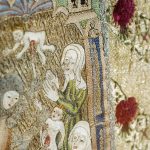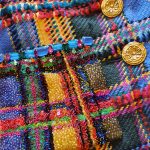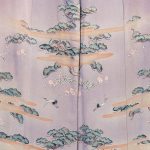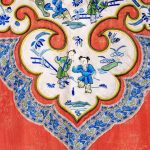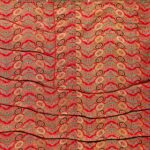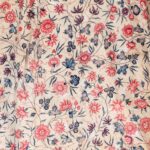In 1982 the Harris received a bequest from a local lady who had recently passed away. Miss Mabel Haythorn (born 1910) lived in an apartment in Frenchwood House in Preston her whole life. We believe she never married and had a private income. In her will, she left the Harris Museum & Art Gallery a […]
View moreIn 1982 the Harris received a bequest from a local lady who had recently passed away. Miss Mabel Haythorn (born 1910) lived in an apartment in Frenchwood House in Preston her whole life. We believe she never married and had a private income. In her will, she left the Harris Museum & Art Gallery a […]
View moreIn 1982 the Harris received a bequest from a local lady who had recently passed away. Miss Mabel Haythorn (born 1910) lived in an apartment in Frenchwood House in Preston her whole life. We believe she never married and had a private income. In her will, she left the Harris Museum & Art Gallery a […]
View moreThe Whalley Abbey Vestments are a set of exquisitely embroidered Medieval ecclesiastical garments with the full set comprising of a chasuble, two dalmatics and a maniple. Of these, the chasuble, maniple and one dalmatic are in the collection of Towneley Hall, while another matching dalmatic resides in the Burrell Collection in Glasgow. These vestments are […]
View moreThese suits acted as a protective layer that would cover visitors own clothing whilst they enjoyed the Fun House at Blackpool Pleasure Beach. They take the form of a robust cotton overall in geometric, colour blocked panels in brown, pink, green and yellow. the cuffs have a contrasting yellow button at each wrist and a […]
View moreThis jacket appeared in the Autumn/Winter 1991-1992 Collection by French designer Christian Lacroix. The design has modernised the traditional tartan pattern, using embellishments like sequins and rhinestones to emphasise the pattern. The key features are the intricately embellished pockets with beads and sequins applied to follow the pattern of the underlying check. This embellishment was […]
View moreJapanese hiki-furisode-style robe, of ombre dyed silk crepe with padded hem and long sleeves and lined with bright red silk. The robe has blank spaces for crests in the small circles either side of the front opening. The beautiful mauve ombre provides a backdrop for the delicate painted motifs depicting auspicious cranes along with pine […]
View moreThis Qing era robe has a typical straight cut, loose fitting body with square sleeves. The simple shape is designed to make efficient use of narrow widths of silk so that as little as possible of the expensive silk fabric is wasted when the garment is constructed. The main fabric is a lightweight silk with […]
View moreA full-length petticoat made from brightly coloured printed cotton in vibrant Turkey Red, green and yellow. The lower part of the petticoat is quilted in deep wavy bands decorated with narrow braid and each band is filled with down feathers. As well as being a lightweight but incredibly warm garment these down petticoats also had […]
View moreA skirt or petticoat made from smooth cotton calico and lined throughout with a soft and coarsely woven cotton. The overall floral pattern is hand block printed and dyed using madder and indigo dyes with simple yet effective use of colour shading and layering to give a variety of colour tones using just a few […]
View more


